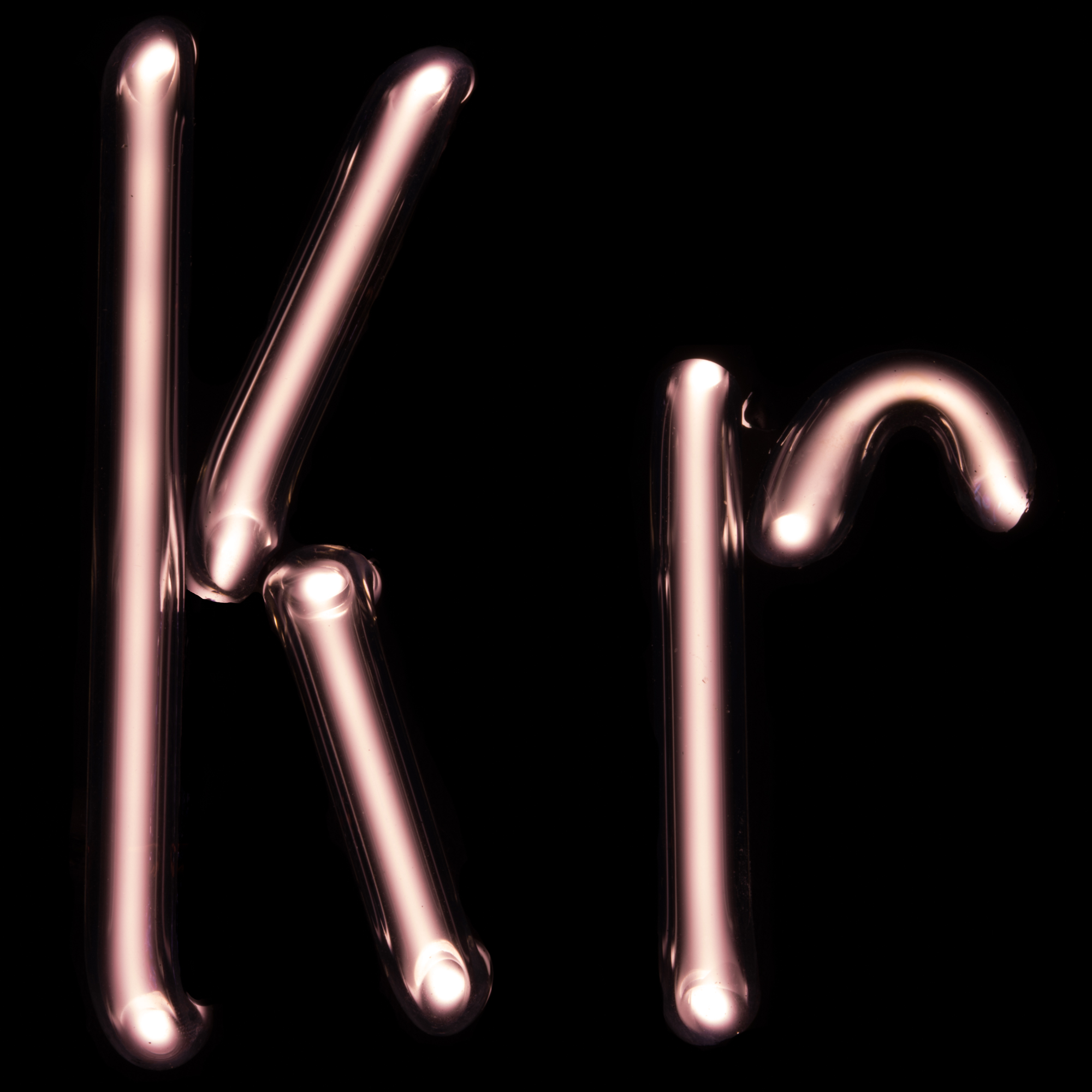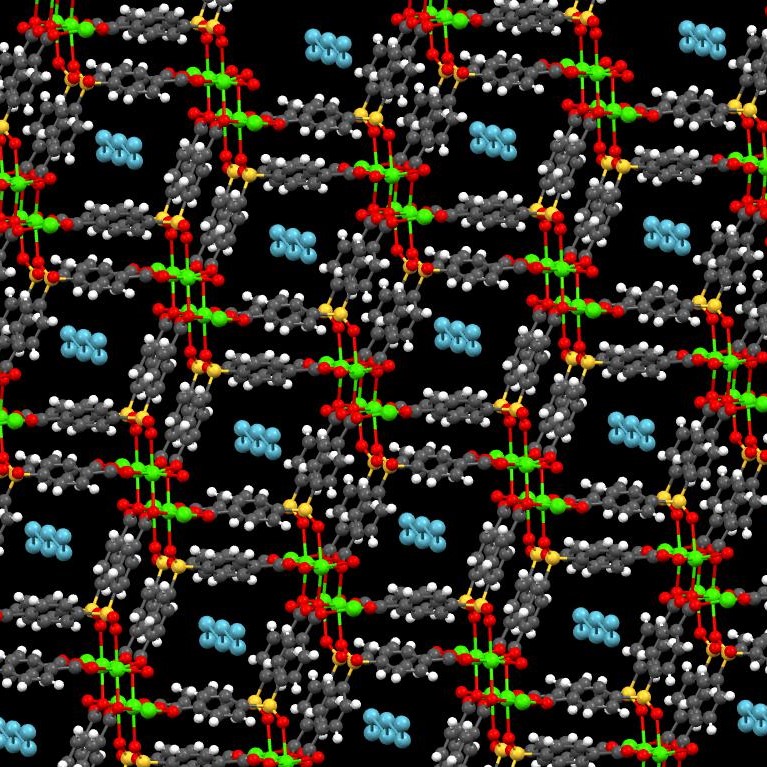Krypton
Krypton:

Krypton being used in a luminous sign.
Facts about Krypton:
- Krypton: Colourless, odourless and tasteless gas at standard conditions
- Fun fact about Krypton: Krypton is sometimes used in photography flashes for very fast photography
- Chemical symbol: Kr
- Atomic number: 36
A crystal structure containing Krypton:

Blue krypton atoms trapped inside the sponge-like structure, showing how these materials can hold gases in nuclear applications.
Facts about this structure:
- Formula: (C14H8CaO6S)n, 0.15n(Kr)
- Structure name:catena-((m-4,4′-sulfonyldibenzoato)-calcium krypton)
- Fun fact about the structure: The krypton atoms are the perfect size for sitting inside the gaps in the molecule.
- CSD refcode: UQEFAZ (What’s this?)
- Associated publication: Debasis Banerjee, Cory M. Simon, Anna M. Plonka, Radha K. Motkuri, Jian Liu, Xianyin Chen, Berend Smit, John B. Parise, Maciej Haranczyk, Praveen K. Thallapally, Nature Communications, 2016, 7, 11831, DOI: 10.1038/ncomms11831
More about Krypton:
One of the major challenges of nuclear energy is how to deal with nuclear waste. The radioactive spent fuel needs to be reprocessed to make sure it is safe. Xenon and krypton are two of the dangerous gases made during the reprocessing, so scientists need to think about how to trap these gases. Currently, the gases are cooled to extremely low temperatures (lower than – 200 °C) where they convert into liquids and can be separated out. However, scientists are now exploring new ways of storing these gases at room temperature, which is much cheaper and less of an explosion risk! Molecular sponges like this metal-organic framework are one option and this particular framework can store both xenon and krypton. The scientists had to test over 125,000 of these framework structures before they identified the optimal one, so these experiments are not trivial!
Learn More About the International Year of the Periodic Table (IYPT) in Crystals Project:
This project (#IYPTCrystals) is part of the International Year of the Periodic Table celebration (#IYPT2019), read more about the project here.
You can follow us on social media; search for #IYPTCrystals or follow The CCDC on X @ccdc_cambridge on Facebook ccdc.cambridge, on Instagram ccdc_cambridge or on YouTube CCDCCambridge.
Understand some of the terms and concepts used with our Frequently Asked Questions page here.